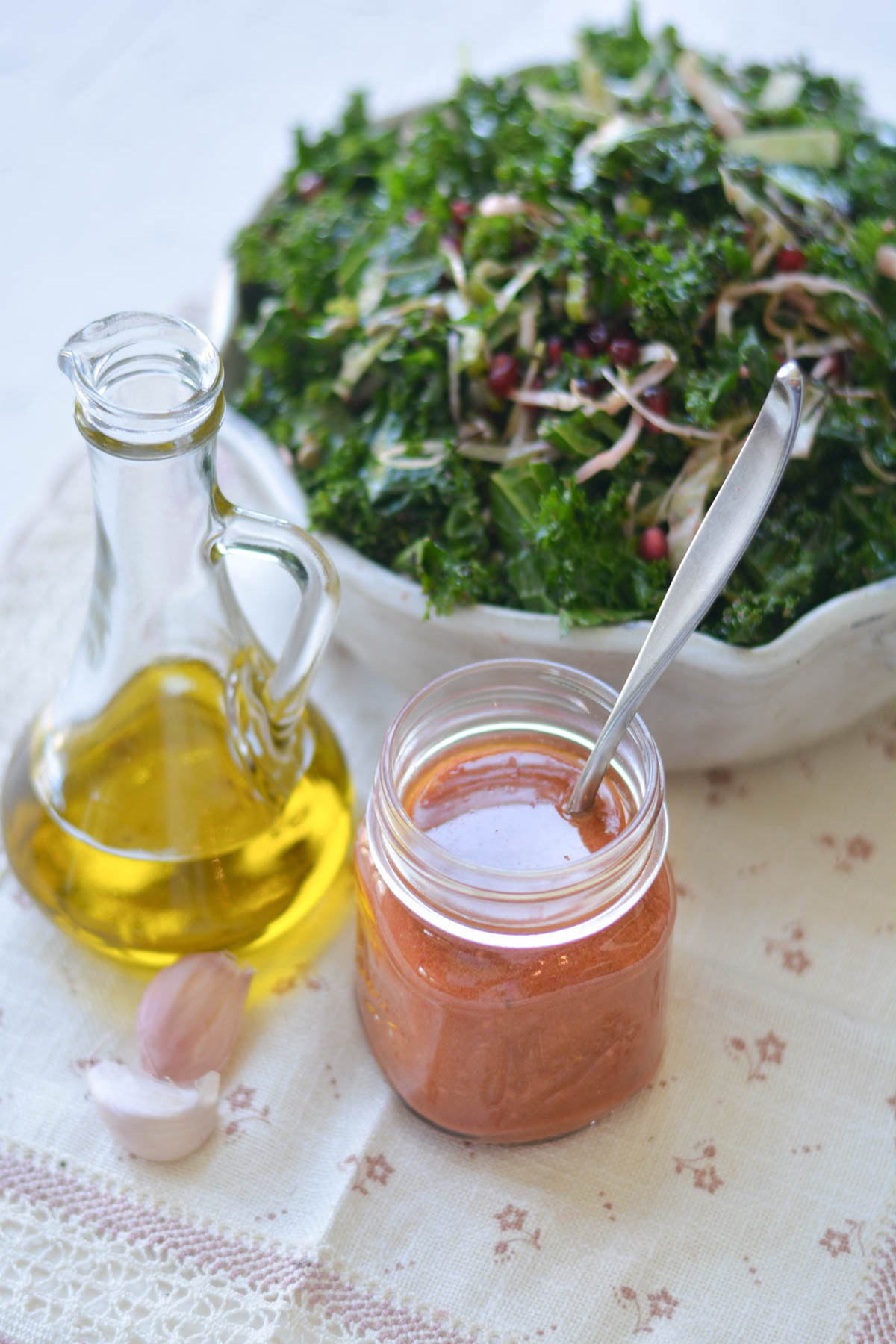How To Make Creamy Soups

Homemade Cream Soups
Homemade cream soups are full of flavor and easy to make. You won’t buy soups in a can again!
The deep flavors of classic homemade cream soups can’t be beaten, especially when ready in minutes. You’ll never want to open a can of soups after learning how easy they are to make and how delicious they are!
When it comes to yummy comfort food, nothing hits the spot like a warm and creamy soup. Whether you’re looking for something to cozy up with on a cold winter night or a simple and comforting lunch option, cream soups are a perfect choice. Coming from Poland, soups are a vital part of Polish cuisine. We Poles love soups and always make them from scratch from fresh vegetables. We make many creamy soups, especially during winter, to make us feel cozy and get the necessary nutrients. So I will take you on a creamy soups journey today and we’ll explore everything you need to know about cream soups, from popular flavors to cooking tips and tricks. You’ll be ready to whip up a mouthwatering and comforting cream soup that will be a hit with your family and friends.
What are the creamy soups?
Creamy soups are popular because they are rich, comforting, and satisfying. They are generally made with broth or stock, vegetables, and cream or milk, creating a smooth and velvety texture. Here are some reasons why you might want to make creamy soups:
- Comforting: A creamy soup’s smooth and velvety texture can be incredibly comforting, especially on a cold day. The rich and creamy flavor can help warm you up from the inside out.
- Versatile: Creamy soups can be made with various ingredients, including vegetables, meat, and seafood. This versatility makes them an excellent option for using leftovers or incorporating seasonal produce.
- Nutrients dense: Creamy soups are a great way to incorporate more vegetables into your diet, and we all need to eat more veggies!
- Easy to make: Creamy soups are typically easy to make, requiring only a few basic ingredients and minimal prep time. This makes them an excellent option for busy weeknights or when you don’t feel like spending hours in the kitchen.
- They can be made ahead of time: Creamy soups can be made ahead of! They are easy for meal prep and easy to store and freeze.
What is the difference between a broth-based soup and a cream-based soup?
Both-based soups are made primarily with broth as the base. The broth is typically made by simmering meat, vegetables, and herbs in water for an extended period of time. This slow simmering process allows the flavors from the ingredients to infuse into the water, creating a rich and flavorful broth. Broth-based soups are usually a lighter version of creamy soup.
Cream-based soups are made with cream as the primary base ingredient. The cream is added to a puree of vegetables, creating a smooth and decadent flavor. Cream-based soups are thicker and heartier than broth-based soups. Because cream-based soups rely on cream for their flavor and texture, they tend to be richer and more indulgent than broth-based.
It’s worth noticing that there are also soups that combine both and cream, such as creamy chicken noodle soup or cream of mushroom soup. These soups typically start with a broth-based soup, and then cream is added to create a richer and creamier texture.
Popular Cream Soup Flavors
One of the great things about cream soups is the endless flavor possibilities. From classic options like tomato and broccoli cheddar to more unique combinations like cauliflower leek and roasted red pepper, a cream soup suits every taste preference. Here are some of the most popular cream soup flavors to try:
- Tomato: Tomato soup is a classic, creamy, comforting favorite. It’s made with pureed tomatoes, cream, and other delicious ingredients like garlic and basil. Perfect at any time of the year.
- Broccoli Cheddar: Broccoli cheddar soup is another classic option that combines the creamy texture of cream with the sharp flavor of cheddar cheese. It’s typically made with pureed broccoli, cream, and cheese and is perfect for fall and cold winter nights.
- Cauliflower Leek: One of my favorites, this soup is a unique and delicious blend of cauliflower, leek, and cream. It’s hearty and filling yet light enough for a simple lunch.
- Roasted Red Pepper: Roasted red pepper soup is a lightly smokey, flavorful, and satisfying option that is perfect for a chilly day. It’s made with pureed roasted red peppers and cream.
- Mushroom: Mushroom soup is a rich and earthy option that’s perfect for mushroom lovers (ME!). It’s made with pureed mushrooms, cream, garlic, and thyme.
How to properly season a soup?

Properly seasoning a soup is vital to make sure it tastes delicious. Here are some tips for seasoning a soup:
- Start by tasting the soup. Before adding any seasoning, taste the soup to see what it needs. Does it need more salt? More acidity? More herbs or spices?
- Use quality ingredients. Quality ingredients will naturally have more flavor, so using fresh herbs, vegetables, and high-quality broth or stock can make a big difference in the final taste of the soup.
- Add seasoning in stages. Add small amounts of herbs or spices at a time, tasting the soup after each addition. This will help you avoid over-seasoning and ensure that the flavors are balanced.
- Remember about acidity! Very important! Adding a touch of acid, such as lemon juice or vinegar, can help brighten the flavors of the soup and make it taste more balanced. You will probably need to add some acid if your soup is too bland. Also, start slow and only add a little at a time.
- Season to taste. There are no hard and fast rules for seasoning a soup – it’s all about what tastes good to you. Keep tasting and adjusting until the soup tastes just right.
How do you thicken a soup without using cream or flour?
Here are a few options:
- Puree some of the soup. Using a blender, puree some of the soup until smooth. This will help thicken the soup and give it a smoother texture.
- Add starch. Adding starch, such as potatoes or rice, to the soup can help thicken it without the need for cream or flour. Cook the starch in the soup until it is soft, then puree some or all of it to thicken it.
- Use vegetable puree. Pureeing vegetables such as cauliflower, squash, or sweet potatoes can help thicken a soup and add creaminess without the need for cream or flour.
- Use a roux substitute. Instead of using flour to make a roux, a traditional thickening agent, try using a slurry: a mixture of cornstarch or arrowroot and water. Mix equal parts of arrowroot or cornstarch and cold water, then whisk it into the soup. Bring the soup to a simmer and cook until thickened.
- Use cashews cream. Cashews cream will make the soup thicker in no time.
- Reduce the soup. Simmer the soup for a longer period of time, uncovered, to help evaporate some of the liquid and thicken the soup. This method works best for already fairly thick soups but needs extra help.
What are some common mistakes people make when trying to thicken cream soups?
- Using too much flour: It is essential not to use too much; otherwise, your soup will be lumpy and have a pasty texture.
- Adding flour directly to the soup will cause it to clump together, making it challenging to incorporate into the soup. Instead, mix the flour with a bit of cold water or broth to create a slurry before adding it to the soup.
- Not cooking the flour enough: If you use flour as a thickener, it’s essential to cook it enough to eliminate the raw flour taste. This can take a few minutes of stirring over low heat.
- Adding cream too early will cause the soup to separate or curdle. It’s best to add the cream towards the end of the cooking process after the soup has thickened.
- Overcooking the soup: Overcooking the soup can cause it to become too thick and lose its creamy texture. It’s important to cook the soup until it reaches the desired consistency.
- Not blending the soup enough: blend your soup thoroughly. Leaving chunks of vegetables or other ingredients can affect the soup’s texture and make it less appetizing.
How to balance the flavors in a soup

Here are some tips for balancing the flavors in a soup:
- Start with a good base: A good soup base is essential for a delicious soup. Use high-quality ingredients and broth to create a flavorful foundation for your soup.
- Taste as you go: Taste your soup frequently as you add ingredients and seasonings. This will help you adjust the flavor as needed.
- Salt: Salt enhances the flavor of a soup, but too much can overpower it. Add a little at a time, tasting as you go, until you find the right balance.
- Acidity: Adding a touch of acidity, such as lemon juice or vinegar, can brighten the flavors of a soup and balance out its richness.
- Sweetness: Adding a touch of sweetness, such as honey or sugar, can balance out the acidity in a soup and bring out the flavors of the other ingredients.
- Texture: Texture is an essential aspect of flavor. Consider adding crunchy toppings or garnishes to complement the smoothness of a creamy soup such as crushed nuts and chopped herbs.
- Herbs and spices: Adding herbs and spices is a great way to enhance the flavor of a soup. Use them sparingly at first, as they can easily overpower the other flavors in the soup. Taste as you go and adjust as needed.
How do you create a smooth texture in a blended soup?
- Start with cooked, tender ingredients. This makes them easier to blend smoothly.
- Blend the soup in batches, filling the blender only half full to prevent the hot soup from exploding. Once you’ve blended the soup, strain it through a fine-mesh sieve or a food mill to remove any remaining chunks.
How to store creamy soups?
- Let it cool: Before storing soup, cool it to room temperature. This helps prevent bacteria growth and ensures the soup won’t spoil quickly.
- Use airtight containers: Store soup in airtight containers such as glass jars or glass containers with lids that seal tightly. This helps prevent the soup from absorbing unwanted odors and flavors from the fridge or freezer.
- Label and date: Label the container with the name of the soup and the date you made it. This will help you track how long it’s been stored and ensure clarity in the future.
- Refrigerate promptly: If you plan on eating the soup within a few days, store it in the refrigerator and consume it within 3-4 days.
- Freeze for later: Freeze it in a freezer-safe container. Soup can last up to 3 months in the freezer. When reheating, thaw the soup in the refrigerator overnight and then reheat it on the stove or in the microwave.
Tips for reheating cream soups?
- Use low heat: This will prevent scorching or curdling the soup. Start with a low heat setting and gradually increase the heat if necessary.
- Stir frequently: Stir the soup frequently while reheating to ensure that it heats evenly and to prevent it from sticking to the bottom of the pot.
- Add a splash of broth to prevent separating.
- Reheat in small batches: If you have a large amount of soup, consider reheating it in smaller batches. This will help ensure that the soup heats evenly and reduces the risk of curdling.
- Avoid boiling: Avoid bringing the soup to a boil while reheating, as this can cause it to curdle or separate. Instead, heat the soup until it is warm and then remove it from the heat.
Creative ways to use up leftovers
- Make a pasta sauce: Cream soup can be an excellent base for pasta sauce. Simply heat up the leftover soup in a saucepan and stir in some cooked pasta for a quick and easy meal.
- Use as a filling for savory pies: Cream soup can be an excellent filling for savory pies.
- Make a creamy vegetable casserole: Combine leftover cream soup with cooked vegetables, rice, and shredded cheese in a casserole dish. Bake in the oven until the cheese is melted and bubbly.
- Use as a sauce for meat or fish: Cream soup can greatly accompany meat or fish dishes. Simply heat the leftover soup in a saucepan and spoon it over cooked chicken, pork, fish, or shrimp.
- Add to mashed potatoes: Cream soup can add a delicious creaminess to mashed potatoes. Heat the leftover soup and stir it into mashed potatoes for a creamy side dish.
How to make delicious vegan creamy soups
- Use flavorful vegetable broth: The broth is the base of the soup, and using a flavorful vegetable broth can add depth of flavor to the dish. You can either make your own vegetable broth or use store-bought broth.
- Use a variety of vegetables: A combination of vegetables can add complexity to the soup and ensure that you get a variety of nutrients.
- Use plant-based milk or cream: Instead of dairy cream or milk, you can use plant-based alternatives such as almond milk, coconut milk, or cashew cream to achieve a creamy texture in your soup.
- Add protein: To make the soup more filling, you can add protein sources such as beans, lentils, or tofu. These ingredients will also add texture and flavor to the soup.
- Use herbs and spices: Adding herbs and spices can enhance the soup’s flavor and make it more interesting. Some great options include thyme, rosemary, sage, cumin, and coriander.
Don’t be afraid to experiment: One of the great things about soups is that they are very forgiving. Feel free to experiment with different combinations of vegetables, herbs, and spices to find your perfect flavor combination.
There are myriad ways to make cream soups, as the possibilities are limited only by your creativity and the ingredients you have on hand.
Cream of pumpkin soup
This thick and creamy pumpkin soup is from my personal repertoire of family recipes. Served with crispy bacon, this soup will, not surprisingly, become your new favorite soup recipe!
This recipe is one of my favorite fall soups!
Cream of Roasted Acorn Squash And Tarragon Soup

This cream of roasted acorn squash, apple, and tarragon soup is easy, vegan, paleo, clean-eating, and the perfect soup for chilly weather. It is one of my all-time favorite acorn squash recipes. It is also one of my favorite combinations of flavors!
Creamy potato and leek soup
This soup is made by cooking potatoes in broth or water until tender and then pureeing them with cream and seasonings.
Cream of cauliflower soup
Quick and easy with delicious flavor!
Cream of parsnip soup
This Creamy Parsnip Soup recipe is like a warm hug for your taste buds, and it’s everything you want in a soup! It’s rich, flavorful and healthy, and easy to prepare.

Homemade Creamy Soup
Ingredients
- Use fresh ingredients: Use fresh vegetables, herbs, and spices. I also like using fresh herbs to give additional flavor. Fresh ingredients will give your soup a brighter taste.
- Choose organic ingredients: Organic produce and dairy products are free from harmful pesticides and additives, which can enhance the overall quality of your soup and improve your health.
- Use homemade broth: In Poland, we always use fresh homemade broth, which is more flavorful than store-bought. It is easy to make and will add a huge value to your soup flavor profile.
- Always use high-quality dairy: Use heavy cream, half-and-half, or whole milk to give your soup a rich, creamy texture.
- Use full-fat coconut milk for deep flavor. Good fat will make your soup will taste amazingly rich!
- Use fresh herbs and spices to flavor your soup. Avoid using old (check the expiration date on your spices when using dried spices. If it is 6 months old, the flavor is different!), stale herbs and spices, which can make your soup will taste dull.
Instructions
Here are some easy tips to keep in mind:
- Use fresh ingredients: Since cream soups rely on simple, fresh ingredients for their flavor, it's essential to use the freshest ingredients possible. Opt for organic vegetables whenever possible, and use fresh herbs and spices.
- Don't overcook your vegetables: Overcooking your vegetables can lead to a bland and mushy soup. To avoid this, cook your vegetables until they're just tender, then remove them from the heat.
- Blend your soup well: To achieve a smooth and creamy texture, blending your soup well is essential. Use a high-powered or immersion blender such as Vitamix to puree your soup until it's completely smooth.
- Adjust the thickness as needed: Cream soups can be thickened or thinned to suit your preferences. If your soup is too thick, add more broth or cream. You can thicken it with a roux made from butter and flour if it's too thin.
- Season your soup well: Since cream soups rely on simple, fresh ingredients for their flavor, it's important to season your soup well with salt and pepper.






